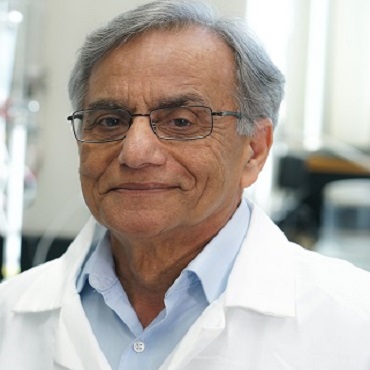Scientific Program

Dr. Kailash Chada
Emeritus Associate Professor of Oncology, Roswell Park Comprehensive Cancer Center, USA
Title: KAPS-biomarker for early diagnosis of Prostate Cancer
Biography:
Dr.Kailash Chadha graduated from University of Guelph, Guelph, Ontario, Canada and completed his postdoctoral work as a fellow of National Research Council of Canada. He has actively participated in teaching several courses at Roswell Park including Interferons & Cytokines, Molecular Biology of Animal Viruses, Recent Advances in Biochemistry of Neoplasia, Histocompatibility and Immunobiology.
Abstract
Prostate cancer (CaP) is the most common non-skin cancer in men and third most common cause of cancer deaths in men. Black men experience a higher burden of incidence and mortality from CaP compared to White men. The Prostate-Specific Antigen (PSA) test, a commonly used biomarker for early diagnosis and management of CaP, cannot alone accurately predict the presence of CaP, its aggressiveness, or the risk of post-treatment recurrence. The widespread use of PSA testing in CaP screening is controversial partially because patients with benign enlargement of the prostate often have elevated levels of PSA and many men with diagnosed CaP have a normal PSA. Consequently, a search for more effective prostate tumor biomarkers is overdue. Our studies thus far show that concurrent measurements of the levels of serum cytokines such as IL-8, TNF-α, and sTNF-R1 (KAPS biomarker) provide a significant advantage as a CaP biomarker over PSA measurements alone in differentiating men with CaP from men without CaP. Our working hypothesis is that both Black and White men with CaP have altered circulating levels of KAPS biomarker compared to men without CaP. Further, the extent to which these levels are altered will vary according to CaP risk factors and can be used as a tool to improve the early detection of CaP and CaP treatment decision-making. We tested our hypothesis in a retrospective study of men with elevated PSA but a negative prostate biopsy, patients diagnosed with localized prostate cancer and patients with castration resistant CaP (CRPC). The predictive accuracy of the markers was described using receiver operating characteristic (ROC) curves. In our analysis, AUC values greater than 0.8 were considered as useful in predicting CaP outcomes for individual patients. All the comparisons for KAPS biomarker were statistically significant at the p<0.05 level. The AUC for each of marker alone was statistically superior to PSA alone (p<0.01 for each pairwise comparison). Each of the KAPS-marker combination AUCs was significantly better than PSA alone (p<0.01 for all), but not statistically different from each other. Combining TNF-α with PSA resulted in a 3.0-fold decrease in the PSA-Alone False Positive Fraction (FPF), and a 3.7-fold decrease in the PSA- Alone False Negative Fraction (FNF). The PSA+sTNFR1 combination had a 5.9-fold decrease in the FPF, and a 2.5-fold decrease in FNF. Ability of KAPS-biomarker was also effective at distinguishing between localized CaP and metastatic CaP patients. AUC results (with 95% confidence intervals) for additive combinations of these biomarkers will also be discussed. The best predictor of localized CaP vs. metastatic CaP was KAPS combined with PSA 0.999 (0.998 to 1.000). Due to the reported significant racial differences in the diagnoses of and mortality from CaP, future CaP biomarker studies should include a racially diverse sample of men, especially Black men.
- Biomarkers
- Prognosis, Diagnosis and Prediction
- Lifestyle and Medication
- Cancer Therapies and Therapeutics
- Immuno-Oncology
- Molecular Genetics
- Drug Development
- Nanotechnology for Biomarkers
- Emerging Therapeutic Biomarkers
- Clinical Research & Biomarkers
- Biomarker Testing
- Advances and Future Perspective

